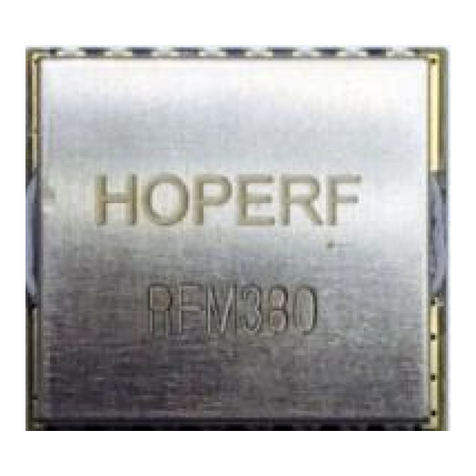
Table of Contents
1Electrical Specifications ........................................................................................................................................................................... 4
1.1 Recommended Operating Conditions .................................................................................................................................................. 4
1.2 Absolute Maximum Ratings ................................................................................................................................................................. 4
1.3 RF Power Consumption........................................................................................................................................................................ 4
1.4 Receiver ............................................................................................................................................................................................... 5
1.5 Transmitter .......................................................................................................................................................................................... 7
1.6 RF Frequency Synthesizer .................................................................................................................................................................... 8
1.7 Settling Time ........................................................................................................................................................................................ 8
1.8 Crystal Oscillator .................................................................................................................................................................................. 9
1.9 Low-frequency Oscillator ..................................................................................................................................................................... 9
1.10 Low Battery Detection ....................................................................................................................................................................... 10
1.11 Digital Interface.................................................................................................................................................................................. 10
1.12 Typical Parameter Chart..................................................................................................................................................................... 10
1.12.1 Rx Current Vs. Data rate ............................................................................................................................................................ 10
1.12.2 Rx Sensitivity Vs. Data rate ........................................................................................................................................................ 11
1.12.3 Tx Power Vs. Supply Power Voltage........................................................................................................................................... 11
1.12.4 Tx Phase Noise .......................................................................................................................................................................... 12
2Pin Descriptions..................................................................................................................................................................................... 13
3Typical Application Schematic................................................................................................................................................................ 14
3.1 Direct Tie Schematic Diagram ............................................................................................................................................................ 14
4Function Description ............................................................................................................................................................................. 17
4.1 Transmitter ........................................................................................................................................................................................ 18
4.2 Receiver ............................................................................................................................................................................................. 18
4.3 Additional Functions .......................................................................................................................................................................... 18
4.3.1 Power-On Reset (POR) .............................................................................................................................................................. 18
4.3.2 Crystal Oscillator ....................................................................................................................................................................... 19
4.3.3 Temperature Compensated Crystal Oscillator (TCXO)................................................................................................................... 19
4.3.4 Sleep Timer.................................................................................................................................................................................... 20
4.3.5 Low Battery Detection................................................................................................................................................................... 20
4.3.6 Received Signal Strength Indicator (RSSI) ...................................................................................................................................... 20
4.3.7 Phase Jump Detector (PJD)............................................................................................................................................................ 20
4.3.8 Automatic Frequency Control (AFC) .............................................................................................................................................. 21
4.3.9 Clock Data Recovery (CDR) ............................................................................................................................................................ 21
4.3.10 Fast Frequency Hopping ............................................................................................................................................................... 21
5Chip Operation ...................................................................................................................................................................................... 21
5.1 SPI Interface....................................................................................................................................................................................... 21
5.1.1 Read/Write Register.................................................................................................................................................................. 21
5.1.2 Read/Write Register in Batch Mode (BURST) ............................................................................................................................ 23
5.2 FIFO.................................................................................................................................................................................................... 24
5.2.1 FIFO Read Operation ..................................................................................................................................................................... 25
5.2.2 FIFO Associated Interrupt.............................................................................................................................................................. 25
5.3 Operation State, Timing and Power Consumption............................................................................................................................. 27




























